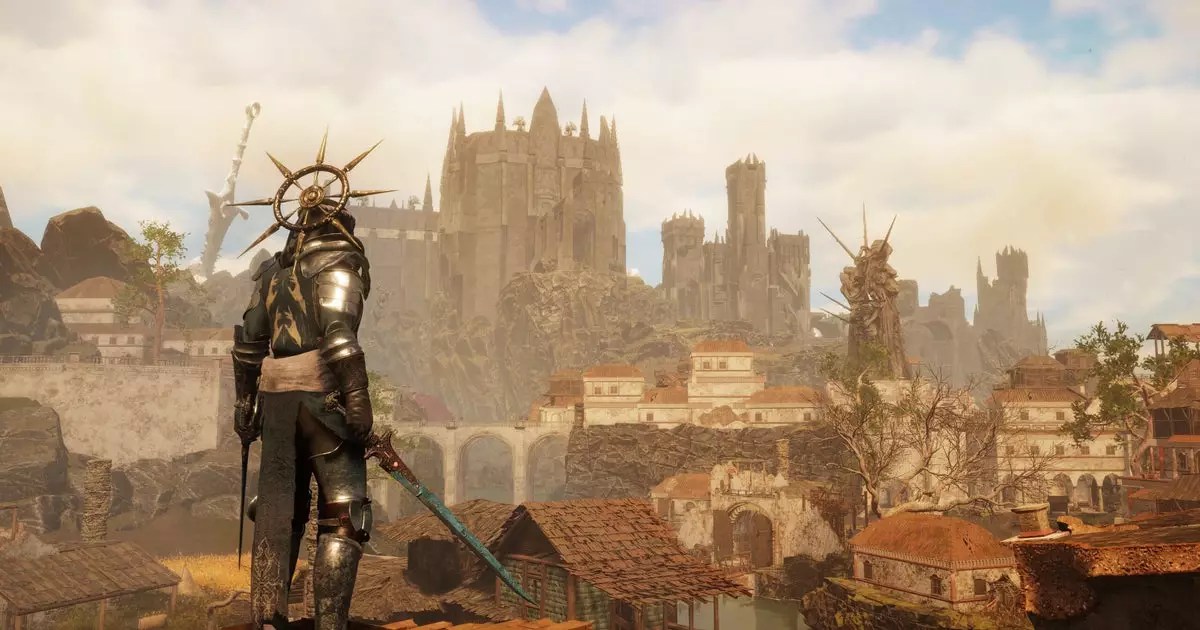In a gaming landscape often dominated by major publishers, players are continually on the lookout for hidden gems that promise a refreshing experience without the strings attached to corporate giants like Microsoft. One such title that has started to capture attention is *Tainted Grail: The Fall of Avalon*, an open-world RPG that offers a departure from the mainstream. With its imminent exit from early access and a burgeoning reputation buoyed by positive user reviews, this game is emerging as a potential favorite among RPG enthusiasts. Given its complex narrative and gameplay mechanics, it invites a thorough examination that goes beyond surface-level allure.
A Dark and Engaging Reimagination of Arthurian Legends
Set against the backdrop of a reimagined Arthurian mythos, *The Fall of Avalon* transports players 600 years after the tragic fall of King Arthur. The world is plagued by chaos and strife, divided into three distinct zones that each come alive with opportunities for adventure. With a staggering claim of 50-70 hours of gameplay, packed with over 200 sidequests, players have the chance to immerse themselves deeply in a hostile yet captivating environment. Unlike many of its contemporaries, this game is not merely about quests and combat; it also allows for personal expression through activities like house decoration and farming, reminiscent of the beloved *Stardew Valley*. This mix of mechanics invites players to embark on a journey of discovery, making the game feel unique within a saturated genre.
The Wyrdness: A Unique Game Mechanic
One of the most intriguing aspects of *Tainted Grail: The Fall of Avalon* is the implementation of the Wyrdness, a primordial chaotic force that intensifies the game’s challenges night after night. This mechanic adds a layer of urgency and strategy to gameplay, forcing players to rethink their approaches as the clock ticks. The world becomes more dangerous after sunset, and villains grow stronger, inviting players to make tactical decisions about when to venture out and when to lie low. This dynamic resonates with real-life rhythms—much like how our choices are influenced by the hours of the day.
However, it’s worth noting that the importance of the Wyrdness in the narrative feels undeniably familiar. Many games have utilized the concept of a world changing during specific circumstances, and while it does add interest, it walks a fine line between innovation and cliché.
Character Customization: A Playground of Possibilities
Character flexibility in *The Fall of Avalon* appears to be a core selling point, allowing players to take on roles that range from chaotic alchemist to stealthy archer. This promises a burgeoning sense of freedom, appealing to a wide range of play styles. However, a critical player will view these claims with a healthy dose of skepticism. Often, marketing rhetoric in the gaming industry leans heavily on buzzwords such as “limitless playstyles” and “meaningful choices,” yet the reality often falls short.
Nevertheless, the appeal of customizing one’s character within a richly woven narrative certainly piques interest. It holds the potential to create unique player experiences, provided the design truly lives up to the promise of versatility.
Art Direction and Thematic Resonance
One stand-out feature of *The Fall of Avalon* is its aesthetic. With its core theme of “everlasting autumn,” the art direction infuses the game with an alluring ambiance, drawing players into its decay-ridden environment. The metaphors of rotting beauty correlate beautifully with the themes of plague and despair, notably marked by the presence of the ominous “Red Death.” This plague serves not only as a plot device but as a haunting backdrop that amplifies the urgency of the player’s quest. The visual storytelling, paired with intricate environmental design, creates an immersive experience that could transport players into a world of poetic tragedy.
Yet, one must wonder if this somber atmosphere complements a story that could fall victim to moral ambiguity, often a shortcut for narrative depth. There are raised eyebrows about how “mature” storytelling might play out when entwined with familiar tropes of good versus evil, as well as the questions raised about heroic choices.
In essence, *Tainted Grail: The Fall of Avalon* has the potential to be more than just another RPG in a long line of similar offerings. It beckons adventurous players to dive deep into its intricacies and embrace the dark, twisted allure of Avalon. As the gaming community watches closely, it might just provide that breath of fresh air many are searching for in a world cluttered with commercial titans.


Leave a Reply